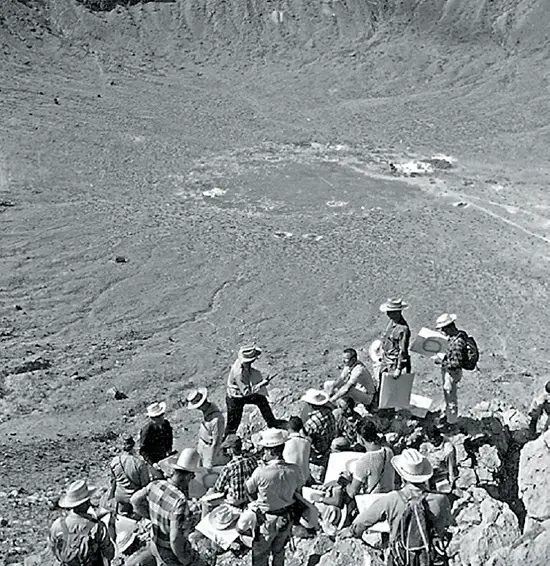Eugene Shoemaker’s groundbreaking work significantly advanced our understanding of impact cratering, a key geological process shaping the Earth and other celestial bodies. While the erosional, volcanic, and tectonic forces shaping Earth’s surface are well-recognized, the role of impact cratering, as evident from the Moon’s crater-laden surface, remained underappreciated until Shoemaker’s research.
Historically, geologists like G. K. Gilbert misinterpreted features such as Arizona’s Meteor Crater as volcanic in origin, despite recognizing the likelihood of impact craters on the Moon. Eugene Shoemaker, a geologist with the USGS, brought a new perspective to this field. His in-depth studies of craters formed by nuclear explosions in Nevada enabled him to identify unique characteristics indicative of high-energy impacts, including minerals formed under extreme shock pressures.
In his 1960 PhD dissertation, Shoemaker conclusively demonstrated that Meteor Crater was the result of an asteroid impact, not volcanic activity. This revelation paved the way for identifying nearly 200 other impact structures globally and significantly contributed to the understanding of planetary geology. Alongside his wife, Carolyn Shoemaker, he dedicated his career to discovering and analyzing Earth’s impact structures and the near-Earth asteroids posing potential future hazards.

